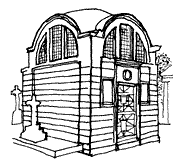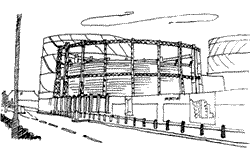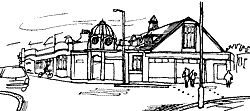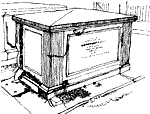About
About the HFHBG
The Hammersmith & Fulham Historic Buildings Group was founded in 1987 to focus attention on the historic environment of the borough and to record, preserve and enhance its historic buildings. At that time people were not as aware of the borough’s heritage as they are today. Here are some examples of the work we've done over the years and the successes we've achieved.
RECORDING
Historic Buildings
The first thing we did was to compile a list of all buildings in the borough of historic interest, documented as far as possible with dates, architects and historic associations and backed up by a photographic record. The task was an enormous one for a voluntary organisation. We reckoned it would take at least five years. In fact we were able to publish the first edition of our list in March 1989. Following many revisions since then, it now includes over 2000 buildings of all types located throughout the borough. Research and recording continue and we hope one day to publish the list on the internet.
Sculpture
|
|
Industrial Heritage
|
PRESERVATION
Bradmore House
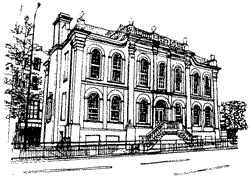 |
West London Hospital
Another building we helped save from total demolition was the old West London Hospital in Hammersmith Road. The Group appeared at a public inquiry and successfully used its research to argue that the building should be retained and adapted to a new use. It is now an office building occupied by Sony.
ENHANCEMENT
Broomhouse Drawdock
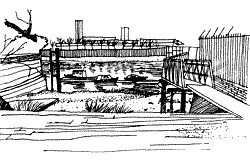 |
|
These are adjuncts to our work of recording, preserving and enhancing the borough's historic environment.
Listing
Listing means persuading English Heritage to grant a building listed building status. Listing helps to protect
|
Conservation Areas
Conservation areas are parts of the borough specially designated by the council and subject to tighter than normal planning rules to help preserve their special character and appearance. From the beginning we have been involved in detailed work with the council on analysing and recording the qualities of conservation areas and in producing conservation area profiles. The profiles – some printed and some only available on the Council's website – are invaluable because they include general design guidelines which can be used (by us and others) to help defend an historic building or area from unwelcome development. In 2006, for example, they were instrumental in defeating proposals for developing a conspicuous site in the Ravenscourt conservation area. In 1981 there were 17 conservation areas in the borough; now there are 43 so our workload in this area has grown enormously.
In some cases we have successfully argued for the extension of conservation area boundaries. Thanks to our lobbying, the whole of the borough’s riverside, including Chelsea Creek, is now in a conservation area. And in 2002 the council accepted our proposal that the Grand Union canal in the north of the borough should be made a conservation area.
WIDENING OUR INTERESTS
Over the years we have followed the lead of English Heritage in recognising the importance of the wider historic environment. In other words, we have gradually extended our brief from buildings to include landscape, parks, open spaces, the Grand Union canal and the River Thames and what planners like to call the public realm, which means things like signage, street furniture and materials.
In 1996 the Group, together with the Hammersmith Society, helped found the West London River Group, an association of amenity societies on both sides of the Thames between Kew and Chelsea. This led to the 2002 publication of the Thames Strategy - Kew to Chelsea, an analysis of the river’s character with policies for its protection and suggested projects for improvement. The Broomhouse Drawdock project mentioned above was one of the Thames Strategy projects successfully brought to fruition with our assistance and involvement.
The Group takes a particular interest in the much-loved views along and across the river, particularly to the wooded tow path on the opposite bank. We are working with the Thames Strategy and colleagues in other boroughs to protect the towpath and to have a management plan adopted to safeguard its landscape and ecological future.
Elsewhere in the borough, we are represented on the advisory board for Fulham Palace and its grounds, on the West London River Group mentioned above and on the stakeholder groups for Bishops Park and Shepherds Bush Common. We are also a member of the London Forum of amenity societies.
If you would like more information about what we have done, are doing now or plan to do in the future, please contact us via the Contact page.
© Hammersmith & Fulham Historic Buildings Group. All Rights Reserved. |

